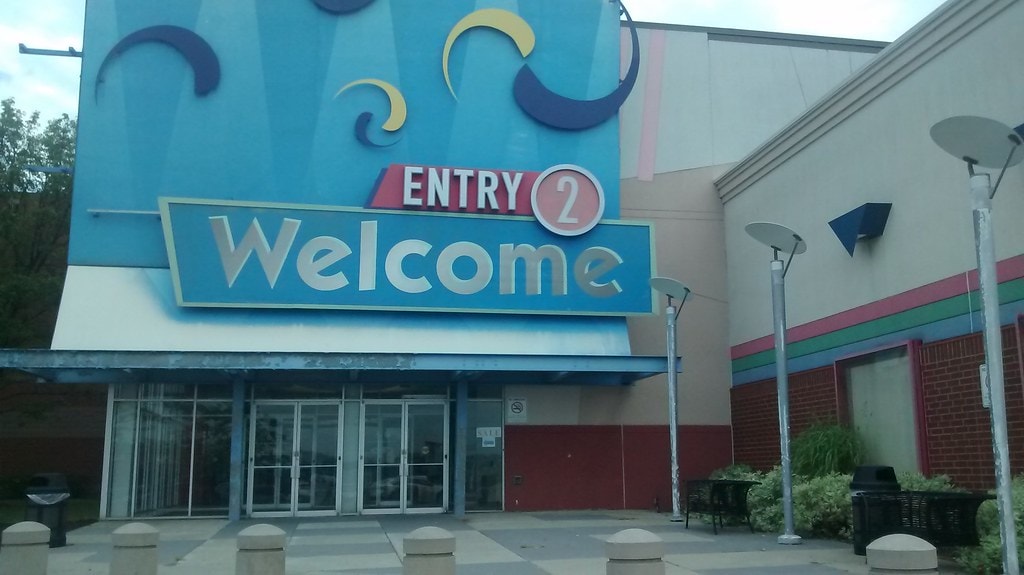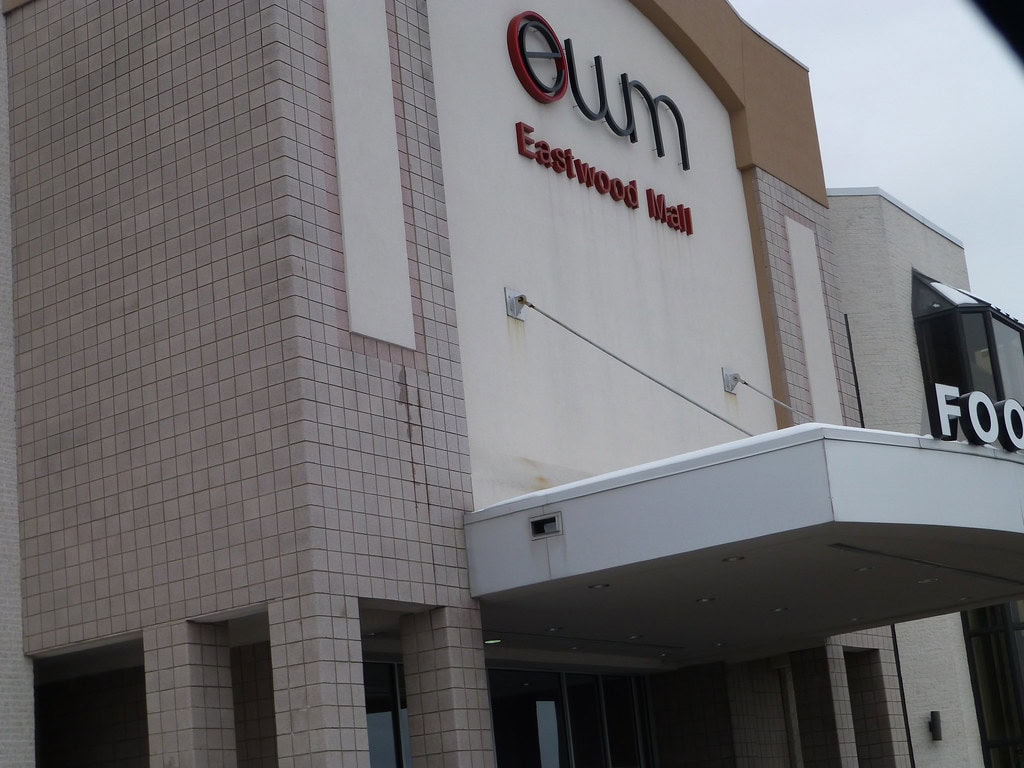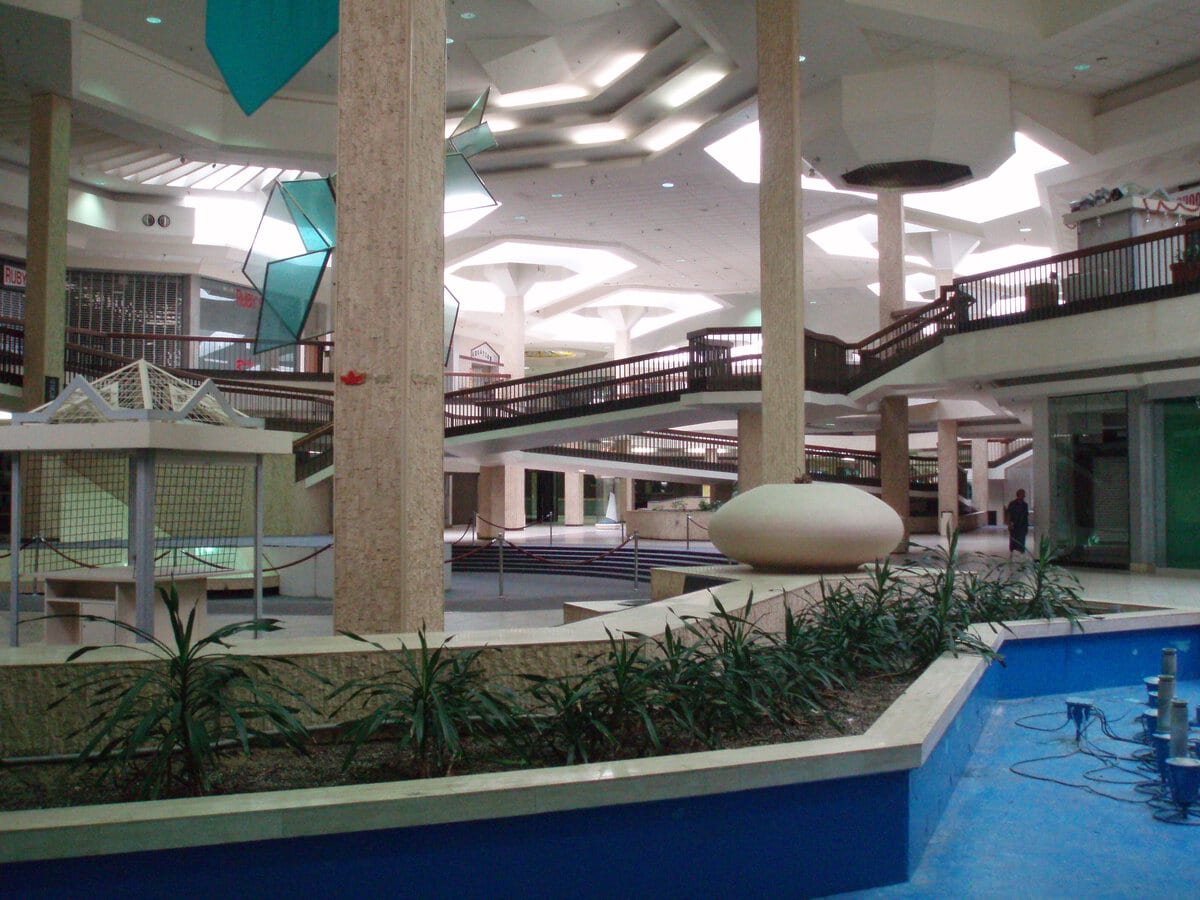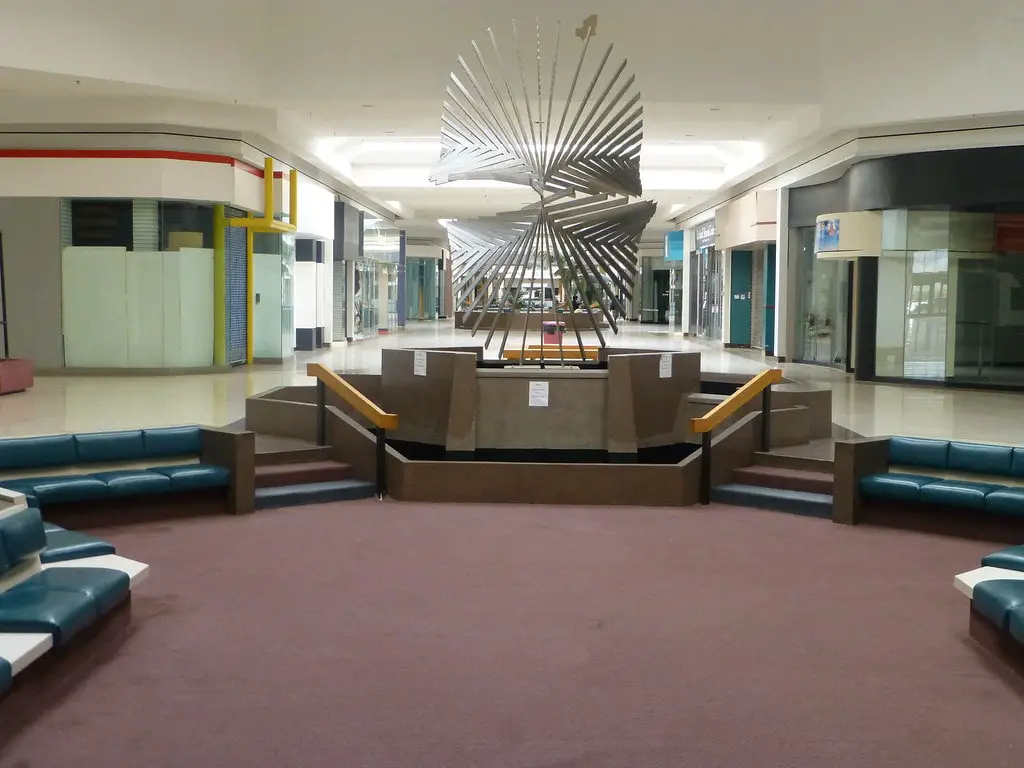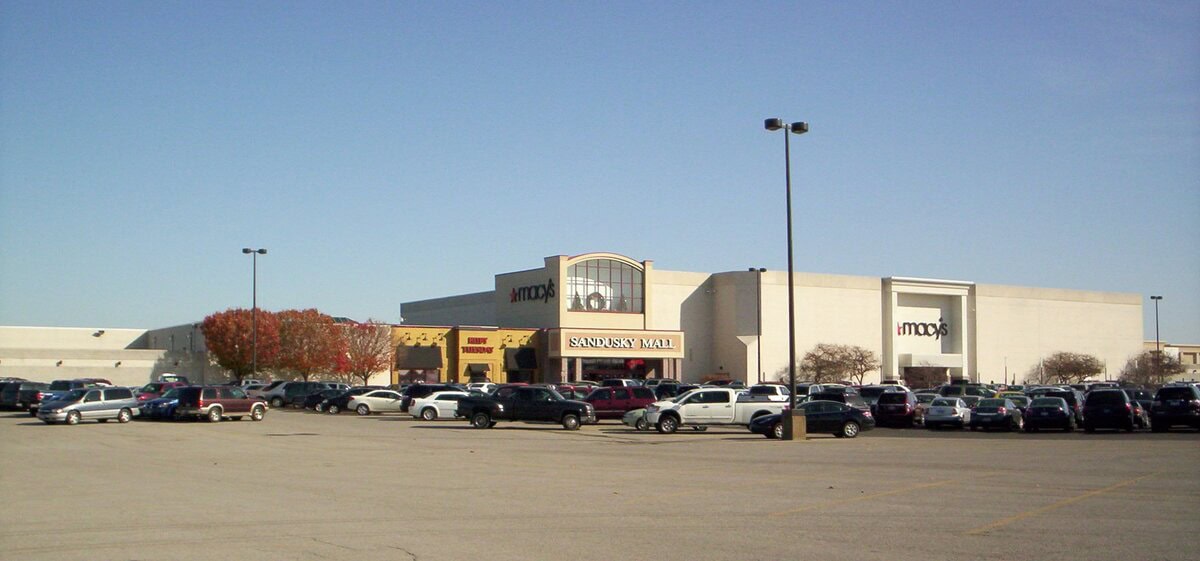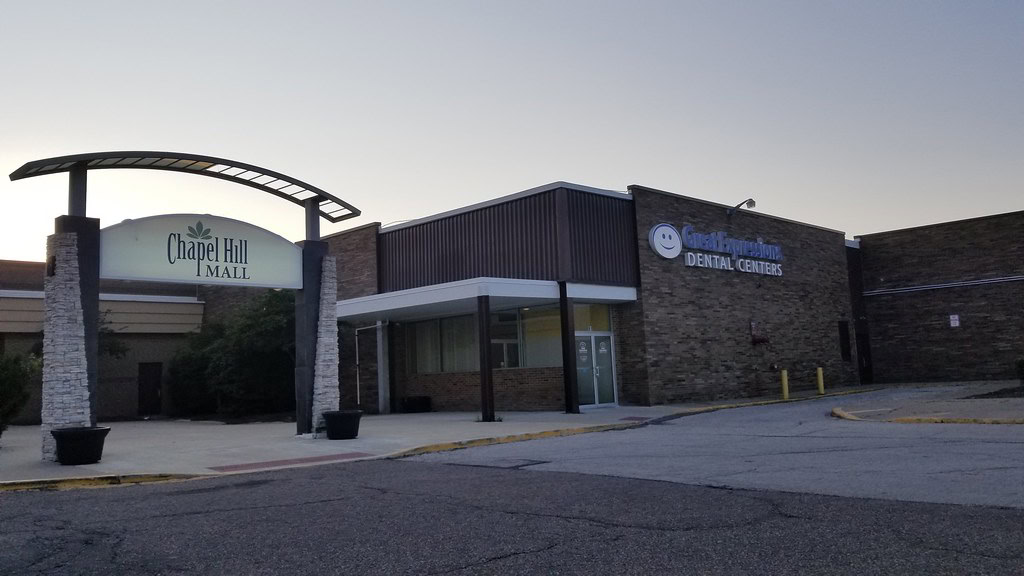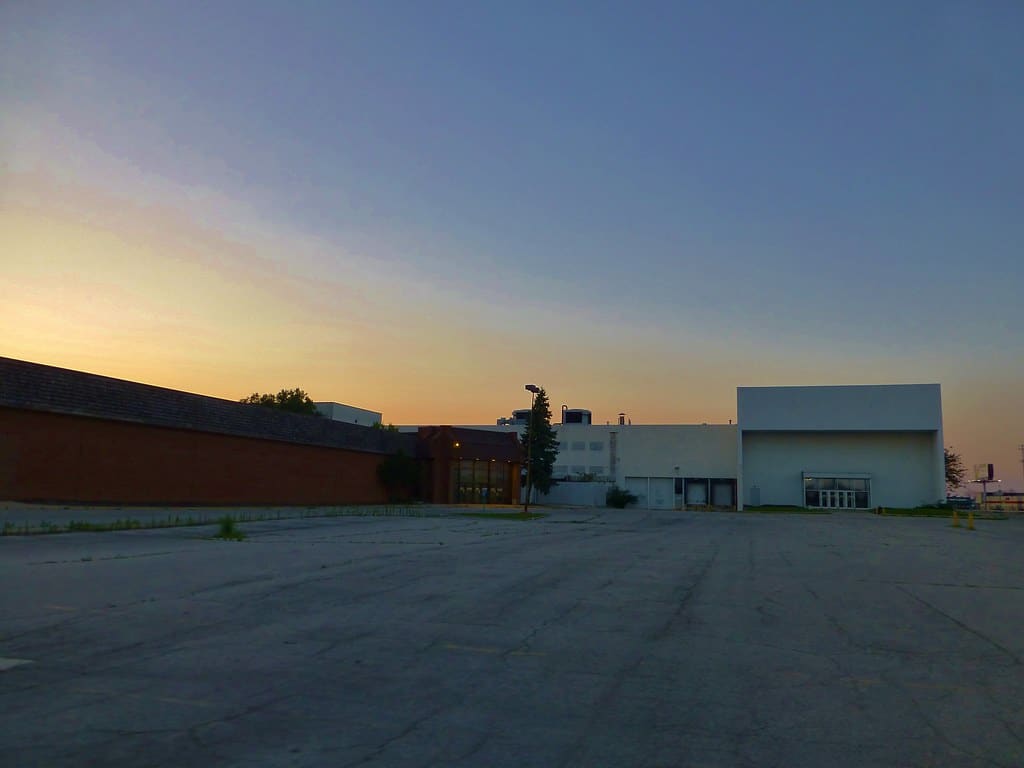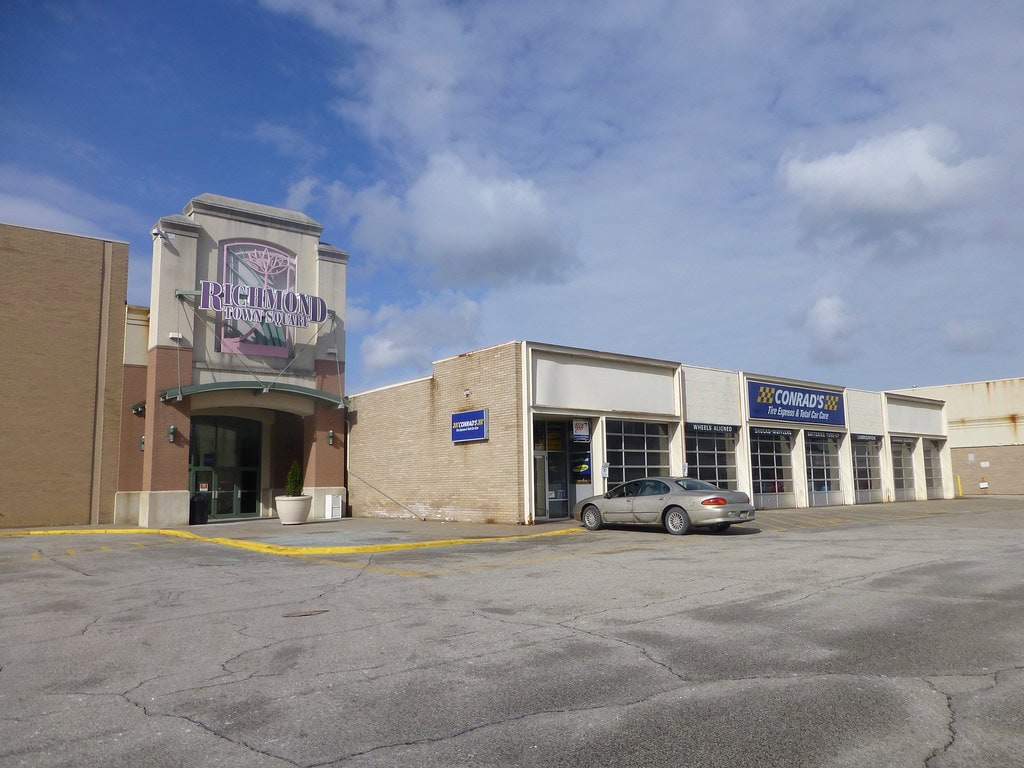Glass, Railings, Silence
Forest Fair Mall is quiet now, but its shape holds. Skylights still pour light onto polished walkways, casting faded shadows beneath powder-blue beams and pastel arches.
The old railings curve toward nowhere, clean but untouched. You can still see where Kohl’s used to be – the lettering faded, the sign half-peeled. Inside, echoes wrap around wide corridors lined with storefronts frozen in late-1990s gloss.
Tile meets carpet. Hardwood meets dust. Some walls are still green and purple, a strange color scheme no one ever bothered to repaint.
Locals traded stories about the place online: the time they saw someone in a full elf costume near the fountain, or how weird it was that the carousel kept running even after the toy stores were gone.
If you’re searching for things to do near Cincinnati, Ohio, you won’t find the mall on the list anymore.
But the building is still there, for now, and so are the memories stuck in its seams.
Launch, Collapse, and the Luxury Overreach
By the time Forest Fair Mall opened its first wing in July 1988, the numbers were already too large to ignore: 1.5 million square feet, five anchor stores, and 6,000 parking spaces.
LJ Hooker, the Australian developer, had turned a single Bigg’s hypermarket plan into Ohio’s second-largest mall.
Higbee’s, B. Altman, Bonwit Teller, Parisian, and Sakowitz were all brought in as retail anchors, though none had existing ties to the region.
Higbee’s dropped out before opening. The rest hung on.
The grand opening was staggered. Bigg’s opened first, followed by a delayed second phase in March 1989.
Some tenants, like Wallaby Bob’s and Time Out, leaned into novelty.
Others, like Koala Klubhouse, introduced new retail-adjacent concepts, such as daycare inside a mall.
By mid-year, foot traffic looked decent, but the math did not. Just 65 percent of the inline space was occupied by summer 1989.
The mall’s financial structure unraveled fast. LJ Hooker filed for bankruptcy that June.
By 1990, three of the five anchor stores were being liquidated.
Bonwit Teller and B. Altman lingered a bit longer, mostly due to legal efforts to maintain property value.
The collapse wasn’t subtle. It happened right in the open, with entire wings half-leased.
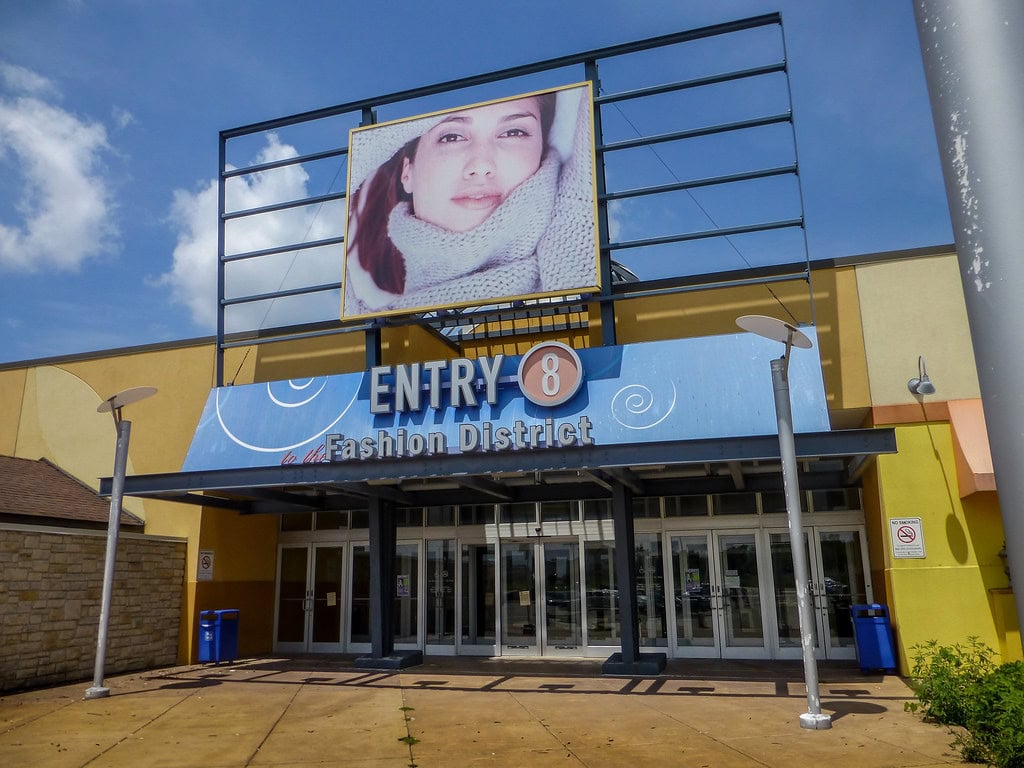
Segmented Leasing and Themed Zones
In 1992, a new strategy rolled out: divide the space, reframe the concept, and hope shoppers respond.
Under the name “The Malls at Forest Fair,” each wing took on a purpose. Fashion went in one.
Entertainment and decor filled another. Bigg’s stayed put in the grocery-driven area.
A food and restaurant zone filled the former Bonwit Teller anchor and center court.
The approach was spatial rather than cultural. The layout remained massive, but the branding tried to make it feel digestible.
By 1993, newer tenants helped prop up the experiment. Sam Goody and Suncoast opened a combined store.
CompUSA moved into the Bigg’s wing. Subway and Hot Dog on a Stick joined the food court lineup.
Dawahares took the Sakowitz space, bringing a regional clothing brand into a wing once marked by high-end labels.
For a time, leasing looked stronger. Reports showed 90 percent occupancy in the apparel and grocery zones. The lifestyle wing lagged at 25 percent.
The B. Altman space remained empty until late 1994, when Kohl’s opened its first Cincinnati store.
That move carried weight. It pulled steady traffic, and unlike its predecessors, it matched the area’s shopping patterns.
But nothing else quite settled. Even successful zones didn’t connect cleanly with the others.
Entertainment Anchors and Discount Revival
By 2000, Forest Fair Mall was trying again. This time, the mix skewed toward outlets and entertainment.
Gator Investments partnered with Glimcher Realty Trust and brought in Bass Pro Shops, Burlington Coat Factory, and Stein Mart in a single push.
All three opened in October 2000. The Burlington space absorbed what had been the “Festival” wing.
Bass Pro took over the former Parisian. Stein Mart occupied Dawahares’ old location, though it ran only a temporary outlet.
Between 2000 and 2001, more names followed. Media Play, Off 5th, and Steve & Barry’s moved in.
Each one was new to the local market. A new Showcase Cinemas complex launched with stadium seating.
Metropolis, a nightclub, opened near Wonderpark, a children’s play venue.
The strategy leaned hard into “value” and novelty. Not upscale. Not luxury. Just different.
This rebrand found traction for a short while. Mills Corporation took notice and bought the mall in 2002.
Renovations began the next year, with new flooring, themed wings, and large format signage.
By August 2004, the mall reopened under a new name: Cincinnati Mills.
Occupancy jumped to 90 percent. But the foundation stayed shaky. Media Play collapsed.
Johnny’s Toys shut down. And the wider retail climate wasn’t easing up. The pace was forward, but the grip was loose.
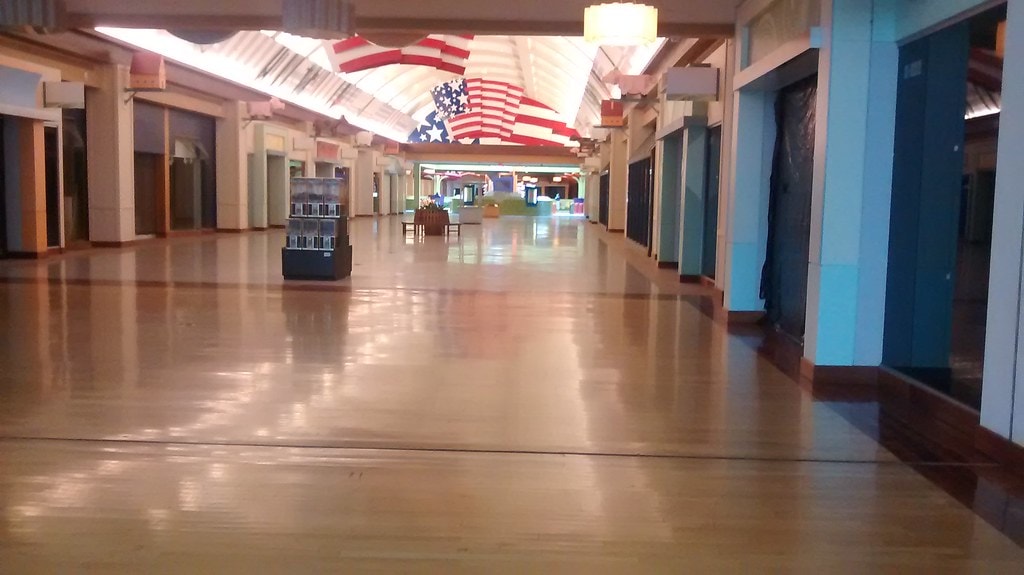
Ownership Turnover and Vacancy Creep
Simon Property Group took over the Mills portfolio in 2007, but by then, the curve had flattened.
Bigg’s, the mall’s original retail anchor, closed in June 2008.
That same year, Wonderpark and Berean Christian Stores folded. The emptying started slowly, then moved faster.
In January 2009, North Star Realty picked up the mall and changed its name again, this time to Cincinnati Mall.
North Star pitched repurposing large sections of the space into call centers, offices, maybe even a hotel.
By then, Steve & Barry’s had disappeared during its national wind-down, and several large outlets, including Off 5th and Guess, had relocated to the newly built Cincinnati Premium Outlets in Monroe.
The decline wasn’t subtle. MasterCuts, GNC, Lane Bryant, and Dress Barn also vanished in short succession.
Even temporary fixes had a makeshift quality. Totes Isotoner opened a 30,000-square-foot warehouse shop near the food court.
Danbarry rebranded the old Showcase Cinemas into a discount theater, though it would last just a few more years.
The core problem remained: too much space, too few tenants, and too many reasons to shop elsewhere. Foot traffic never recovered.
By 2010, large sections of the mall were unused and unlit, though the carpet and railings still looked ready for visitors who no longer came.
Two Holdouts and the Final Drift
In 2010, the mall was sold again, this time to Cincinnati Holding Company. Another rebrand followed – Forest Fair Village.
The name didn’t carry far. From 2011 onward, leasing attempts turned toward non-retail ideas.
A skating rink was proposed inside the former Bigg’s. A production studio was pitched for the old Guitar Center unit.
A hotel was discussed for the former Elder-Beerman space. None opened.
Bass Pro Shops remained, though their relocation plan had surfaced by 2013.
Burlington Coat Factory, which once anchored the “Festival” wing, left that same year.
The Danbarry Dollar Saver cinema shuttered in 2014. Leasing agents came and went. In 2017, a brokerage team listed the mall again.
At that point, only a handful of tenants were left: an arcade, a kids’ play space, and two big-box anchors that never connected to the main concourse. Arcade Legacy pulled out in September 2022.
A month later, the Forest Park Fire Department ordered all remaining mall interiors closed due to safety violations.
The structure had reached a legal endpoint.
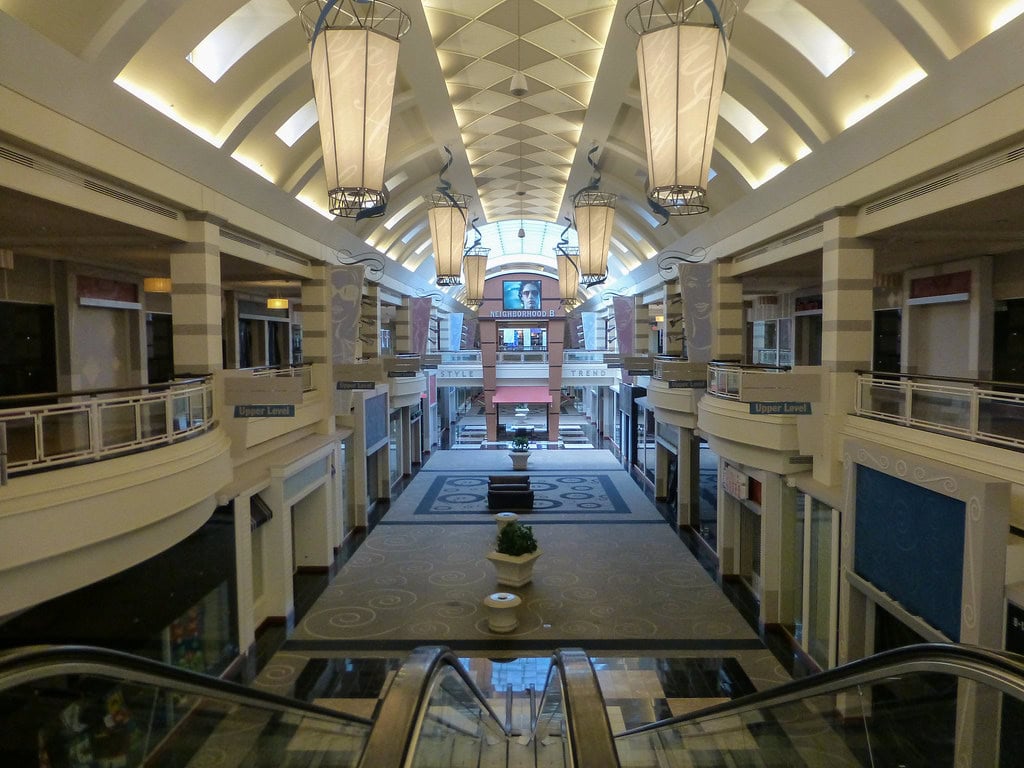
Shutdown Orders and Final Closures
On December 2, 2022, the Forest Park Fire Department stepped in.
They ordered the immediate closure of the mall’s interior sections, citing sealed emergency exits, blocked access points, and general fire safety hazards.
By then, most of the mall had already gone dark.
Just two anchors remained open: Kohl’s and Bass Pro Shops, both operating through separate exterior entrances. Everything else was behind locked doors.
In January 2024, Bass Pro confirmed what had been expected for months.
The store would close on January 13 and relocate to a newer location off Interstate 75 in West Chester.
That announcement cleared one of the last pieces from the board.
A year later, in January 2025, Kohl’s added Forest Fair to its list of 27 underperforming stores scheduled for closure.
The final days weren’t televised. They passed without ribbon-cuttings or banners.
The entrances stayed shut, the lights stayed off, and the hallways emptied without ceremony.
A few exterior signs remained in place as of spring 2025, faded but legible.
Inside, photos surfaced online showing merchandise racks pushed to one side and skylights still casting clear afternoon shadows.
Nothing inside had been gutted yet. It all just stopped, quietly and without much notice.
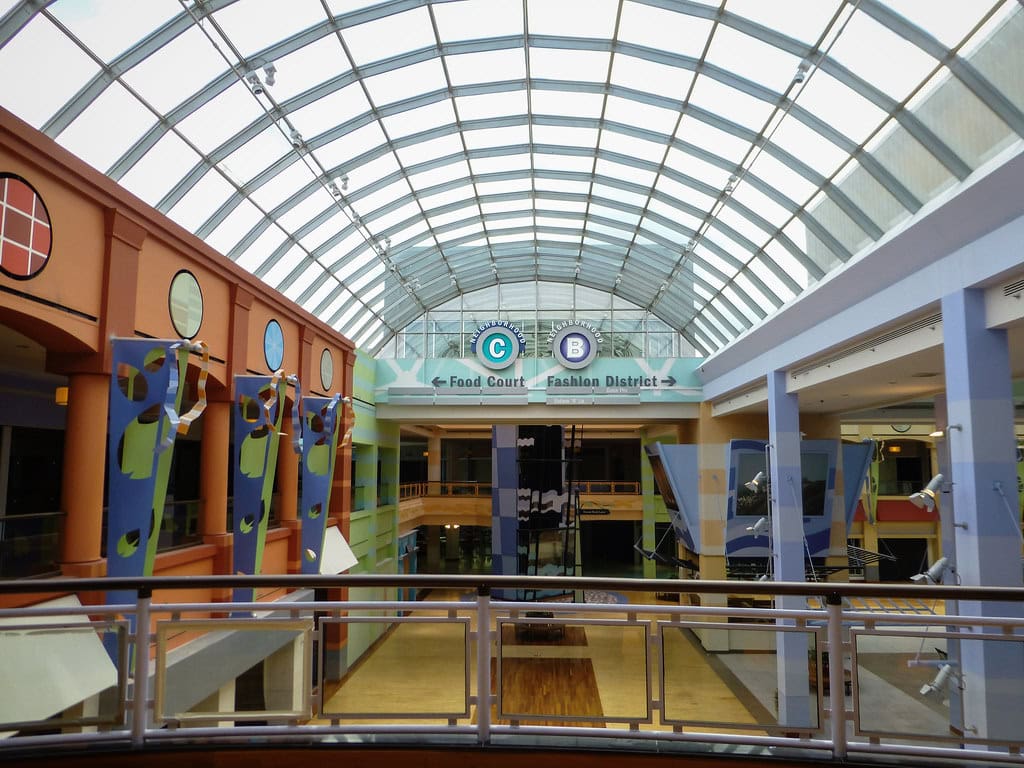
Demolition Contracts and Industrial Transition
By early 2025, public records confirmed the shift.
Forest Park and Fairfield each passed zoning changes to convert the mall property into industrial use.
The rezoning affected about 54 acres of the site.
Hillwood Investment Properties, a Texas-based firm, signed on to develop three buildings across the parcel, each ranging from 250,000 to 355,000 square feet.
Fairfield’s city council approved the demolition and redevelopment agreement in March 2025. Forest Park finalized its own version two months later.
A state land-bank grant worth $7.9 million had already been awarded to help fund demolition.
That funding carries an expiration date at the end of 2025, which will fast-track the work schedule.
The remaining 45 acres on the opposite side of the parcel are still listed for mixed-use consideration.
No projects have been named. For now, the entire structure is scheduled to come down during the summer of 2025.
Following demolition in 2025, construction of the new industrial park is scheduled to begin in 2026.
If work proceeds on pace, the site could open for use in early 2027.
After decades of leasing, rebranding, and partial reuse, the concrete footprint will be cleared out to make room for warehousing.
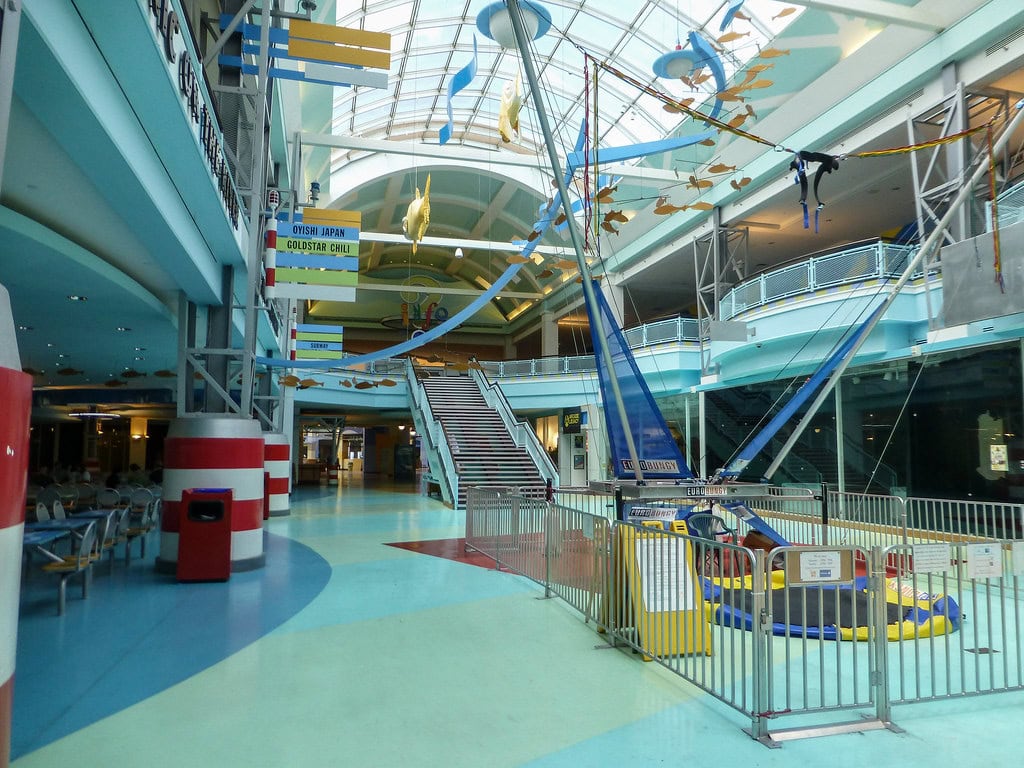
🍀

